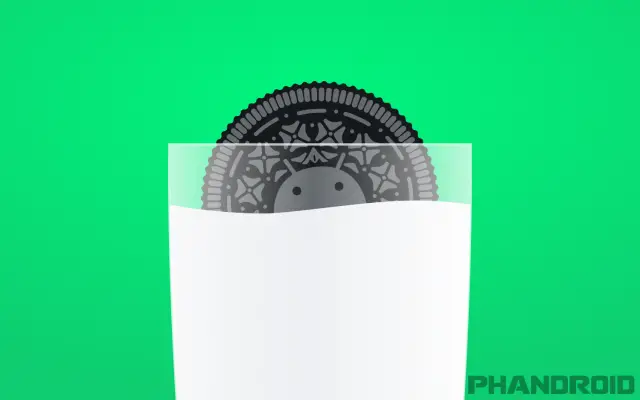

Android 8.0 Oreo: Release Date, New Features, And Everything Else You Need to Know
Every year since KitKat, we’ve been hoping and praying for more opportunities to brand Android after an actual brand name treat. We thought we’d get that chance with Nutella after a long series of troll teasers by Googler Hiroshi Lockheimer.
But he wasn’t trolling with all the Oreo references this year: Android 8.0 Oreo is official, and it’s coming to a device near you. Here’s everything you need to know about its rollout!
When is the Android 8.0 Oreo update being released?
The AOSP code for Android 8.0 Oreo is available as of today, August 21st. This means that any developer or OEM can pull the code from Google’s servers and get going on their development efforts. If you’re skilled enough, you could even build a basic version of Oreo to flash on a device.
But the version most of us will be getting — that which is infused with Google services — is yet to arrive. Google says to expect it first on the Pixel family and on the Nexus 5X and Nexus 6P after rounds of carrier testing, though they didn’t give an estimate of how long that might take. The Pixel C and Nexus Player will also get rollouts soon. We’ll let you know the moment OTAs start seeding out to folks.
[Update]: Actually, Google seems to be showing build OPR6 being available in system image form for all of the aforementioned devices, however it seems a non-fatal error occurs during the installation process. You can find the system images here and even try your luck over-the-air as we await further word from Google.
What if I’m in the Oreo beta?
The rollout timing applies to you too, but you’ll be happy to know you won’t have to do anything special once the goods start arriving: you’ll be upgraded automatically like you’ve always been.
What about other phones?
Google says Essential, General Mobile, HMD Global (Nokia), Huawei, HTC, Kyocera, LG, Motorola, Samsung, Sharp and Sony will all either offer new devices or upgrade existing ones. Of course, other unnamed manufacturers are sure to be working on bringing Oreo to their newest devices and perhaps to some of their older ones.
That said, we don’t expect this to be an overnight affair. Expect longer waiting times than those who own Pixel and Nexus devices, and even longer if you’re getting updates through your carrier. History shows rollouts may take months at a time depending on the phone you have, so stay patient.
What new features are in Android 8.0 Oreo?
We’ve already pointed out some of the best new features for users in Android 8.0 Oreo. That list includes native picture-in-picture support, notification dot indicators for homescreen icons, new emojis, an official autofull API, and Google-infused smart text selection tools.
- Accessibility button: Allows you to quickly access from the navigation bar accessibility features, like magnification, and functionality within accessibility services, like Select to Speak.
- Accessibility volume: Accessibility services can optimize the audio experience for users with disabilities.
- Adaptive icons: Developers can now provide a full-bleed square shaped icon and OEMs will mask the icon to ensure intra-device consistency.
- Ambient screen: Highlights the incoming notification with larger font, highlighted app name and immediate access to actions.
- Background execution limits: More control over how apps run in the background for better overall system performance.
- Background location limits: Limits the frequency of location updates in the background for better overall system health.
- Deep color: Enables applications to render richer visual content with more vibrant colors and subtler gradients. Supports full color management which allows applications to render images in the format and quality they were intended.
- Downloadable fonts: Applications no longer need to bundle custom fonts, which helps reduce their size.
- Install unknown apps: Hostile downloader apps can’t operate without permission; users now permit the installation of APKs per-source.
- Integrated printing support: Compatible with all Mopria-certified printers, which make up 97% of printers sold worldwide.
- Linkable files: API that allows you to share files across the Internet via web links.
- Native C/C++ API for high-performance audio: API function for high-performance audio including Native C/C++ audio API.
- Notification categories: More granular and consistent control over which notifications can appear and how intrusive they are.
- Notification snoozing: Lets users hide notifications for a period of time, similar to Inbox snoozing.
- Project Treble: The biggest change to the foundations of Android to date: a modular architecture that makes it easier and faster for hardware makers to deliver Android updates.
- TextView autosizing: Developers can now let the size of their text expand or contract automatically based on the size and characteristics of the TextView, making it much easier to optimize the text size on different screens or with dynamic content.
- Tooltips: Support for tooltips (small popup windows with descriptive text) for views and menu items.
- Wi-Fi Assistant: Auto-connects you to high quality open WiFi and secures your connection with a VPN back to Google.
When do the Android Oreo cookies arrive?
Hopefully soon. Really soon.

